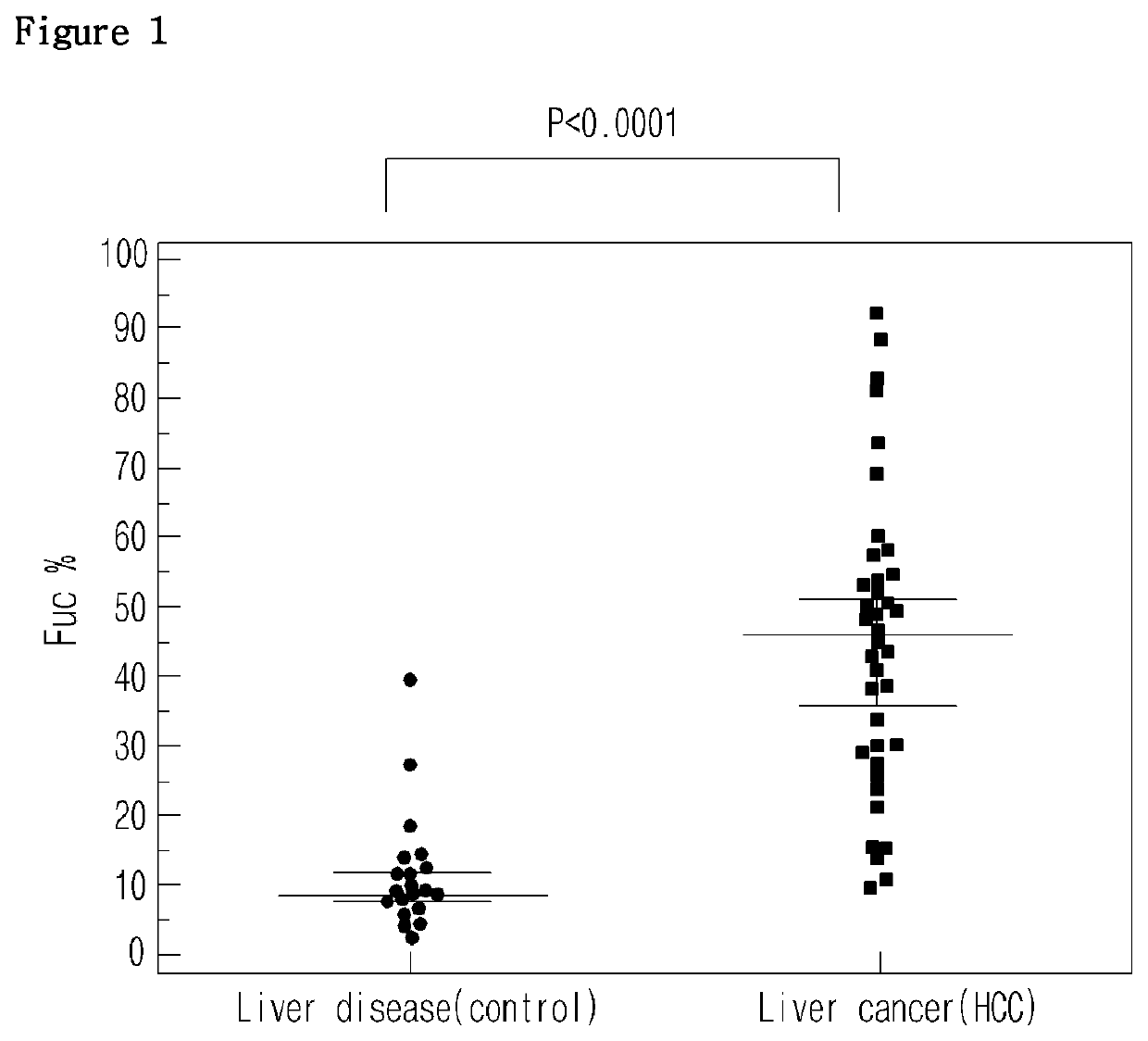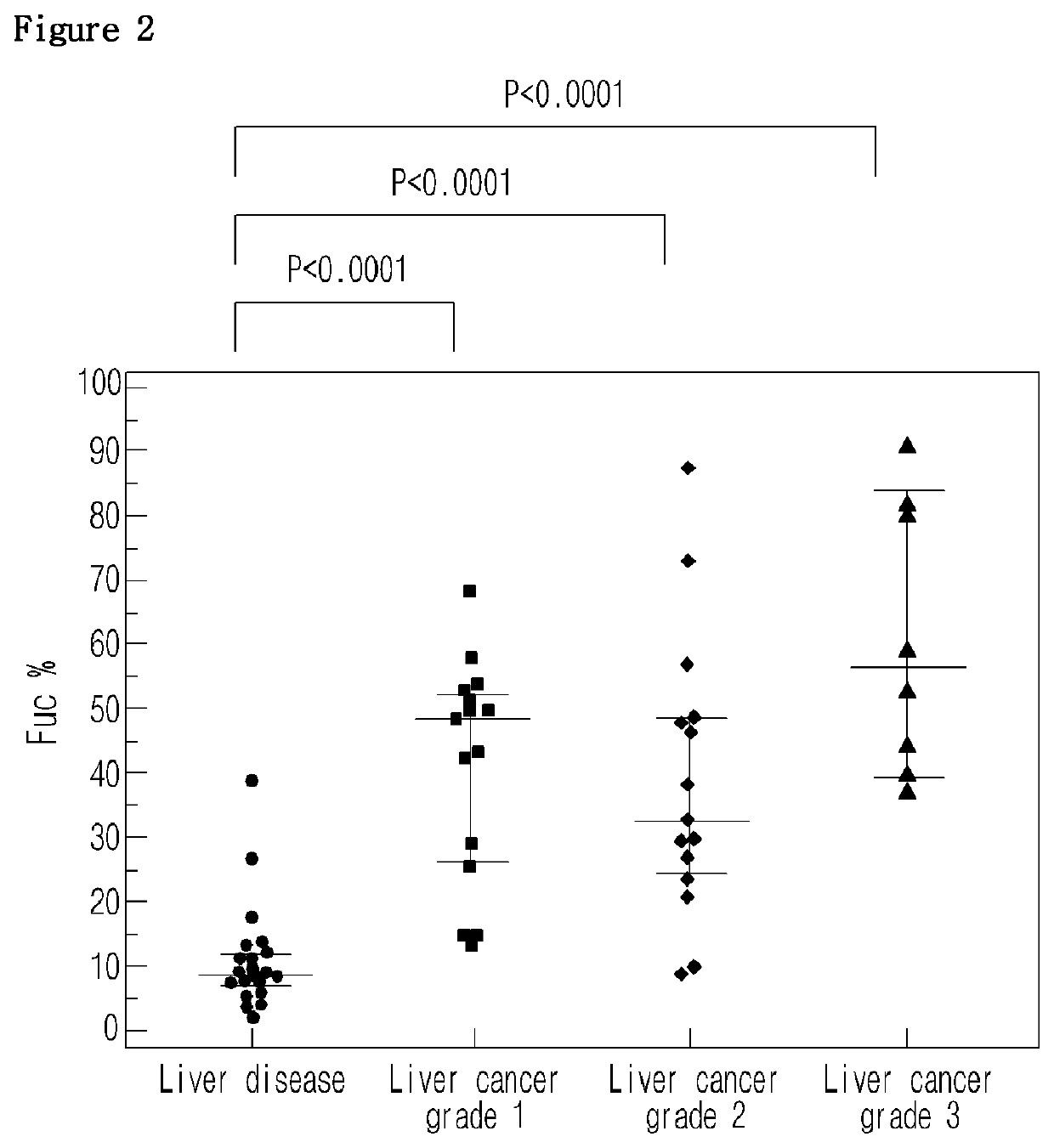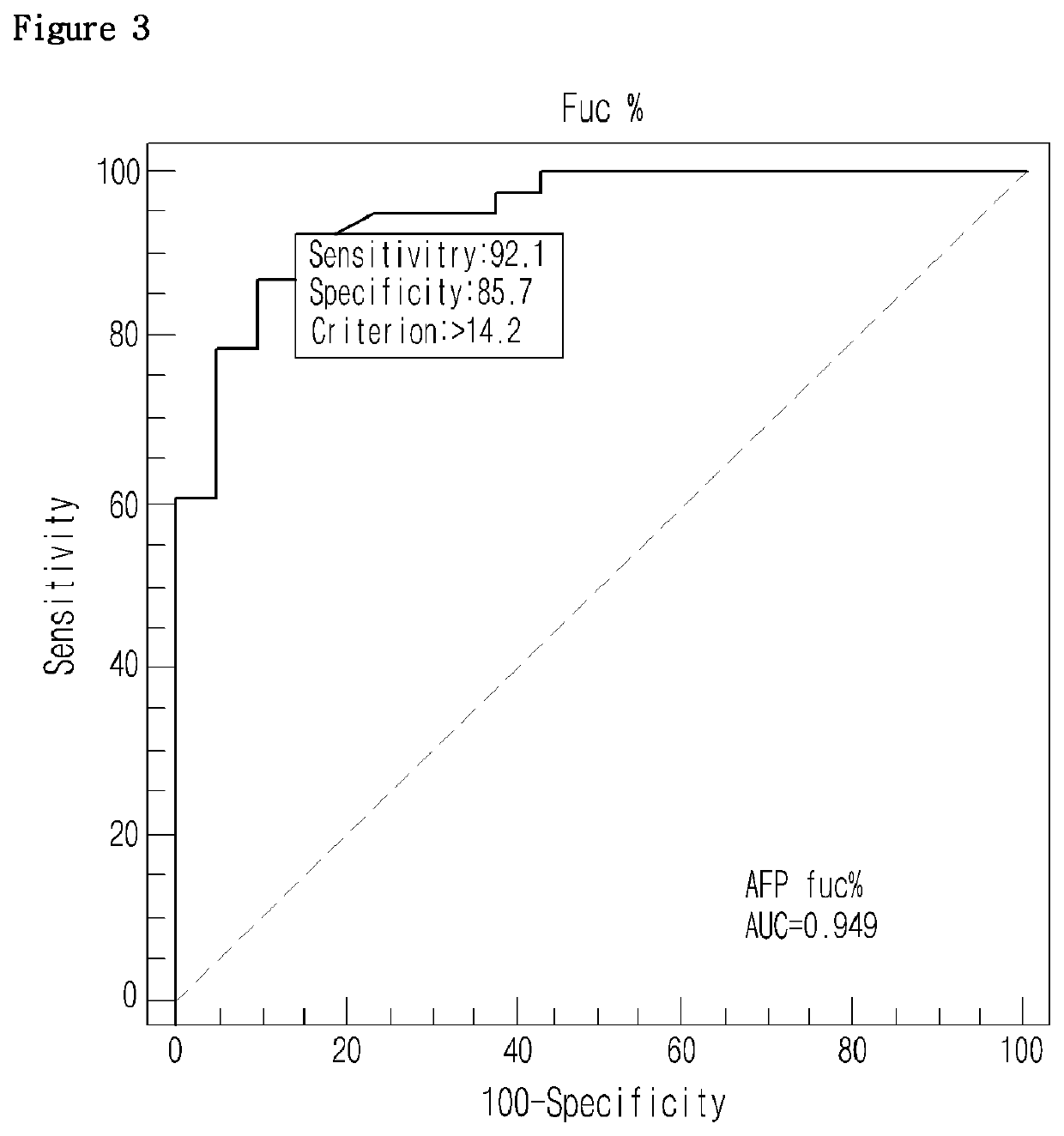Diagnostic method of liver cancer using α-fetoprotein derived glycopeptides by mass spectrometry
a glycopeptide and mass spectrometry technology, applied in the direction of material analysis, post translational modification detection, instruments, etc., can solve the problems of limited analysis speed and reliability, low fucosylation rate, and inability to detect liver cancer, etc., to achieve the effect of high fucosylation rate and effective use of diagnosis
- Summary
- Abstract
- Description
- Claims
- Application Information
AI Technical Summary
Benefits of technology
Problems solved by technology
Method used
Image
Examples
example 1
on of Blood Sample
[0050]Blood samples were obtained from 38 liver cancer patients and 21 other liver disease patients (control), from which sera were separated as experimental samples. Particularly, liver patients were divided according to the Edmondson-steiner level that determines the degree of liver cell cancer differentiation into grade 1, grade 2, and grade 3. Blood samples were obtained from 15 grade 1 patients, 15 grade 2 patients, and 8 grade 3 patients. In the meantime, control samples were obtained from 8 hepatitis patients and 13 liver cirrhosis patients.
example 2
n of AFP Glycoprotein
[0051]AFP glycoprotein was separated from the serum by immunoprecipitation.
Preparation of Magnetic Bead and Anti-AFP Antibody Conjugate
[0052]First, the magnetic bead and anti-AFP antibody conjugate was prepared for immunoprecipitation. Particularly, 5 mg of tosylactivated magnetic beads (Thermo Fisher Scientific, USA) was added to 500 μl of 0.1 M sodium borate for bead washing. The mixture was shaken by using an e-tube rotator. Then, the magnetic bead mixture was separated into sodium borate solution and magnetic beads by using an e-tube magnet, and sodium borate was eliminated thereafter. The above procedure was repeated to wash the beads four times, and 250 μg of anti-AFP antibody (Ab frontier, Korea), an AFP-specific universal monoclonal antibody prepared for immunoprecipitation, was added thereto. The mixture was reacted at 37° C. for 16 hours. At this time, 50 μl of ammonium sulfate was added to the reaction mixture above and pH of the reaction mixture was...
example 3
ion of Glycopeptide Originated from AFP Glycoprotein
Liquid Chromatography (LC) / MRM
[0055]In order to analyze the mass of the glycopeptide derived from AFP glycoprotein using the sample obtained in Example 2, LC / MRM was performed as follows.
[0056]Particularly, C18 (5 μm, 300 mm×5 mm) was used as the trap column and C18(5 μm, 75 μm×5 mm) was also used as the analysis column. The column was connected to TripleTOF mass spectrometer (SCIEX), the mass spectrometer operating based on the principle of electrospray ionization (ESI), followed by LC / MRM. The analysis was performed by injecting 4 μl of sample at the flow rate of 400 nl / min. At this time, an aqueous solution containing 0.1% (v / v) formic acid was used as the moving phase A and an acetonitrile solution containing 0.1% (v / v) formic acid was used as the moving phase B. The analysis was performed under the moving phase concentration gradient conditions shown in Table 1 below for 60 minutes.
[0057]
TABLE 1Time (min)Moving phase A (%)Mov...
PUM
| Property | Measurement | Unit |
|---|---|---|
| pH | aaaaa | aaaaa |
| flow rate | aaaaa | aaaaa |
| mass | aaaaa | aaaaa |
Abstract
Description
Claims
Application Information
 Login to View More
Login to View More - R&D
- Intellectual Property
- Life Sciences
- Materials
- Tech Scout
- Unparalleled Data Quality
- Higher Quality Content
- 60% Fewer Hallucinations
Browse by: Latest US Patents, China's latest patents, Technical Efficacy Thesaurus, Application Domain, Technology Topic, Popular Technical Reports.
© 2025 PatSnap. All rights reserved.Legal|Privacy policy|Modern Slavery Act Transparency Statement|Sitemap|About US| Contact US: help@patsnap.com



